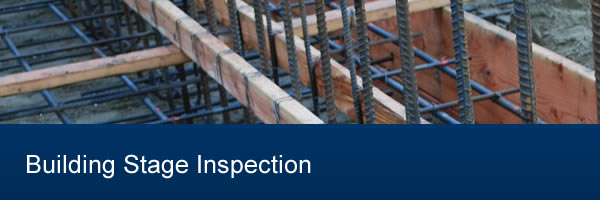Building and Pest Inspections: Everything You Need To Know
The importance of building inspections for home buyers and sellers.
The term building inspection refers to and inspection done on a commercial or residential property by private contractors or government employees at city, township or county level. Building inspectors are professionals in different disciplines i.e. plumbing, electrical, building structure and pest control. In Australia, building inspectors are employed by government bodies and private companies.
Building inspectors carry out inspections to ensure buildings comply with electrical, mechanical, plumbing, structural and additional building regulations and standards.
In this article, our focus will be on building inspection done before a house is sold. It’s in the best interests of home sellers and buyers to do building inspections before any negotiations can take place. If you are looking for a professional to perform a building and pest inspection on your property please contact us with any questions or queries you may have.
Below is a detailed guide covering everything you need to know about building and pest inspections.
Types of building inspections
There are 3 main types of inspections which include;
- Pre Purchase Property Inspection
- Pest Inspection
- Building Stage Inspection
Below is a detailed discussion of each of these types of building inspections.
1. Pre Purchase Property Inspection
A pre purchase building inspection is done before property is purchased. The main intention behind pre purchase inspection is to establish the condition of property before purchase. Building inspections are usually done before home sale contracts are signed. A pre purchase inspection helps home buyers discover any structural problems and hidden costs that are associated with the property. Discovering such costs is important because it gives the prospective buyer room for bargaining during price negotiations. Or they may choose against buying the property.
Pre purchase inspections usually cover the interior and exterior of a house, roof space, under floor space as well as the site itself. The inspections should also cover driveways, outbuildings and retaining walls, wiring and plumbing. It’s important to note that pre purchase inspections don’t include estimates of cost of repairs and minor defects. It is however possible to find building inspectors who offer such services and many more.
2. Pest Inspection
A pest inspection is focused on assessing the presence of pest infestation and any associated damage. Pest inspections are carried out by pest controllers who are licensed to perform all the necessary inspections on structures to assess damage or the possibility of damage caused by bugs, insects, termites and dry rot. These services are usually required by home sellers for obvious reasons i.e. a pest infested house will have a difficult time attracting buyers.
Safe Pest Control
It’s important to note that there are many pest control methods which don’t involve the use of pesticides and sprays. Depending on the pest in question, safe pest control methods can be used i.e. traps and/or physical modifications. Such pest control methods don’t have a negative effect on the environment and people. It’s also important to note that there are a number of pesticides, select formulations and baits with low toxicity available in the market today. It is also possible to get tailor made pest inspection and control services if you are worried about allergies and/or sensitivity to chemicals.
Pest inspection targets different areas of a home guided by the pest in question. Effective pest inspection and control should focus on places where pests are known to hide, feed and breed. The presence of advanced technology such as thermal imaging can help pest inspectors discover the most unique and disguised hiding place for pests. A thermal image device is like a infra red camera that can produce results similar to an x-ray. Thermal imaging detects problems that cannot be seen with the human eye. Thermal imaging is a technology that improves visibility of objects in dark environments by using infrared radiation.
3. Building Stage Inspection
A building stage inspection is simply inspections done in stages. There are 5 different stages include:
1. Foundation stage:
A foundation stage inspection takes place during the start of a building project and concentrates on testing the foundations for suitable stability.
2. Frame stage:
The frame stage focuses on inspecting a building’s frame before internal wall linings can be installed. The focus of the inspection at this point is identifying any structural problems with building frames.
3. Lock-up/waterproofing stage:
When all the major components of a building are in place including the doors, windows and roof, a building can be waterproofed and inspected for safety. The lock-up/waterproofing stage inspection focuses on the ability of the building to withstand rain and other environmental hazards. The inspection takes place before bathrooms are tiled and shower trays installed. This kind of inspection can also be done by home owners themselves. Home buyers can also request for this kind of inspection when they want to identify lock-up and waterproofing flaws.
4. Fixing/pre-painting stage:
After construction is complete the pre painting inspection is carried out before any final touches like painting and any repairs are done.
5. Practical completion or handover stage:
This is the last building stage inspection. Handover inspections are very detailed. They take place after a building is complete and ready for handover to the new owner.
Who needs building inspection?
It is important for both home owners and home buyers to have a detailed inspection performed on the property. Home owners need building stage inspections to ensure that they end up with a structurally sound home. Home building is a complex process. Not all contractors can be trusted to do an exemplary job. Building stage inspections ensure homes are built according to the stipulated safety and structural standards and codes.
Home buyers need building inspection to ensure they get value for their money.
There is no sure way of establishing the structural and safety standards of a home without doing thorough building inspection. Unfortunately we can’t trust all home sellers. Pre purchase and pest inspections help home buyers discover the real value of a home before purchasing. Building inspection also gives home buyers room for negotiations if the property has any serious flaws.
Different types of reports
The main aim of doing a building inspection is to get a report which highlights the condition of the home/building in question.
Below we look at 6 types of reports.
1. Completion and defects reports:
These types of reports are acquired after construction is complete. They usually summarize the condition of a building. The reports also state if there are any extensions/additions made to a property.
2. Dilapidation reports:
This report identifies the condition of the property normally completed prior to any construction work being done on an adjacent property. It will outline the property condition and if any surrounded work may affect the current structure. If a neighbouring property is looking to extend or renovate a dilapidation report will need to be performed before the work commences .
3. Owner/builder reports:
An owner / builder report is carried out home owners and builders who want to sell their property. These reports are required by law in Australia before home owners can put their homes up for sale. They cover both structural and non-structural elements of a home outlining any defects or work that wasn’t carried out satisfactorily.
4. Home owner warranty reports:
This warranty report indentifies any defects present within a building. The report is sometimes required by insurance companies before they can offer home owners home warranty insurance.
5. Pre purchase building reports:
A pre purchase report is often requested by potential home buyers before they decide to buy homes. The reports contain detailed information of the home for sale. These can be conducted by home sellers or buyers. In most cases, the inspections are carried out by both parties. Home buyers request for pre purchase building inspections to confirm that they are buying a structurally sound and safe house.
6. Expert witness reports:
An expert witness report is required when home buyers aren’t satisfied with the condition of a house they have just bought. You can use an expert witness report to claim compensation. Expert witness reports cover defects, damp problems, sub-standard work, termite damage and cracks among other damages.
Benefits of a building inspection
Below are some of the main benefits home sellers and home buyers stand to gain from doing building inspections.
Home seller benefits
1. You avoid unpleasant surprises:
This is by far one of the most important for a home seller. Early detection of issues in your home allow you to perform repairs and maintenance before any potential buyer is made aware of them. Conducting a home inspection can save you from unpleasant surprises during the negotiations phase. For instance, a potential buyer can pull out at the last stage when they discover flaws you hadn’t mentioned. To avoid such instances, you are better off inspecting your house thoroughly before you put it up for sale.
2. Saves you money:
Contrary to popular belief, building inspections actually save home owners money. Repairs are usually expensive when they are done by home buyers. A home buyer can easily take advantage of flaws to give you a low offer. They can also choose to inflate the cost of repairs just to get a better deal. Doing a building inspection gives you time to look for the best home repair deals as opposed to agreeing on buyer terms blindly. In most cases, you can even do repairs yourself saving a lot of money in the process.
3. You maintain control over the negotiation process:
Another important benefit of carrying out building inspection. When you identify building flaws early, you can be able to fix them to your advantage. You can also enquire for real estate advice on the best types of repairs to ensure you engage in work which adds value to your home.
Attending to all maintenance issues before a sale provides you with complete control during the selling phase. When you have all the necessary home inspection reports, serious home buyers will rarely give you a hard time during price negotiations because they believe they are getting value for their money. Reliable property reports increase the value of your home.
Home buyer benefits
1. You identify serious flaws early:
We would all like to be able to trust home sellers and many are honest about the condition of their property but with such a large investment you cannot take chances. This is where building inspections are imperative as they give you an independent report on the property condition.
2. You get value for your money:
Identifying flaws in a home before the actual purchase gives you room for negotiations or the opprtunity not to buy. It’s important to note that most homes have flaws. You just need to look carefully to find them and capitalize on them. Building inspection reports identify all flaws ensuring you can negotiate for a fair price.
Disadvantages associated with building inspections
Although building inspections are known for their benefits, they attract some disadvantages. For instance, building inspection reports may not include some important information such as;
- Estimated cost of repairs
- Minor defects outside a building inspector’s expertise
Such omissions can obviously compromise decision making. Another common disadvantage revolves around cost. As mentioned above, there are many types of inspections. To get the best out of the entire process, it’s important to do more than one type of inspection. This can increase your initial expenditure when getting various reports.
Finally
Buying and selling property is an exciting time for everyone involved. However with such a large investment it is essential to do your research and identity any issues before making a decision. Building inspections give both the buy and seller peace of mind during and after the purchase.
Published By Scott Mcpherson Google+







